Solved: Readers identify Ohio photos from early 1900s — with surprising results
I must have traveled past that building a hundred times on state Route 91, but I didn’t recognize it in the old photograph.
Maybe it’s because the store has been painted blue, the hill has been leveled and a one-story wing has been added.
But plenty of readers recognized the picture as one of the oldest buildings in Munroe Falls.
We heard from people across the country when I enlisted the public’s help in identifying some of the photos from a collection of 26 glass plate negatives from the late 1890s and early 1900s.
Lucille Hageman, former vocalist for the Denny Thompson Orchestra, gave the 4-by-5 plates to me nearly 25 years ago, saying they had been passed down to her husband, Harold “Red” Hageman (1912-1984), an Akron radio announcer. I recently had Halamay Color Lab in Akron develop the nearly 125-year-old images after they languished in my basement for over a decade.
What’s in the pictures? Here’s what the history detectives found out.
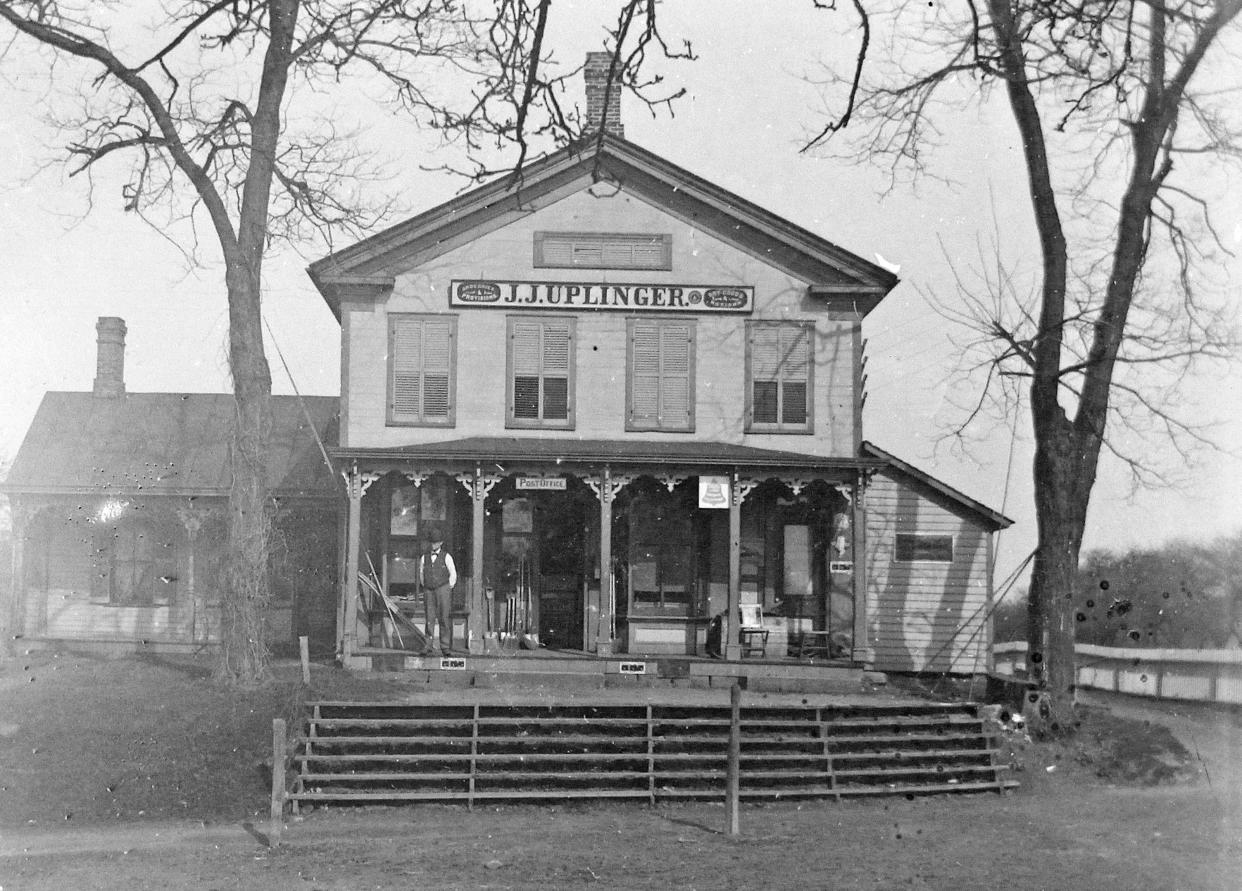
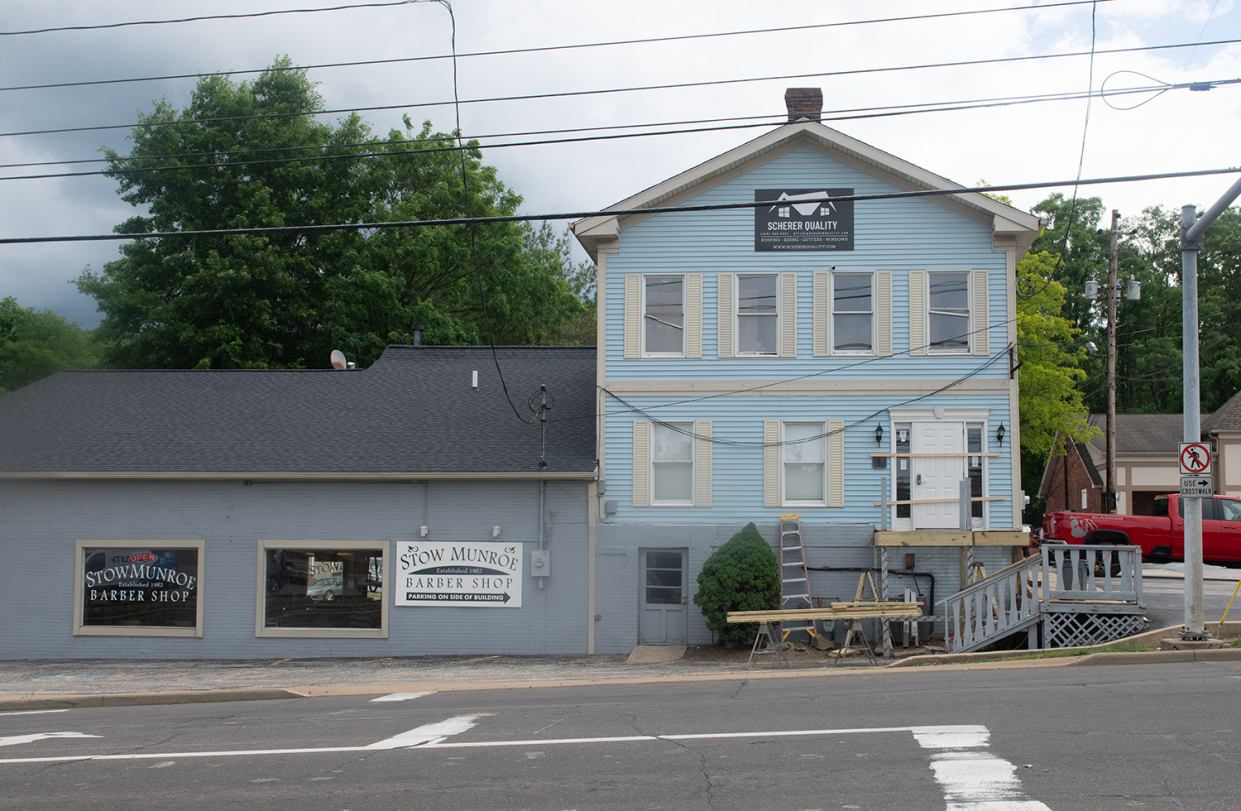
The J.J. Uplinger store
That’s apparently Jacob J. Uplinger (1853-1938) standing outside his general store at 10 N. Main St. in Munroe Falls. He had served as grocer and postmaster since the early 1890s after moving from Ghent.
According to the Munroe Falls Historical Society, Lyman Beckley reportedly built the structure in 1836. It served as a sash factory in the 1840s before being converted into a general store with a second-floor residence.
Charles C. Reid bought the property in 1882 from Martha Cartwright Shannon, and Uplinger operated the store from 1891 to 1912. It later served as the C.P. Dixon store and C.E. McCracken store.
Today, it houses Scherer Quality Construction. The Stow Munroe Barber Shop operates in a commercial wing built in the 1950s.
Akron librarian Michael Elliott checked genealogy records and learned that Red Hageman was Uplinger’s great-nephew. Elliott theorized that the glass plate negatives were passed down to Hageman from his aunt Lillian, the widow of Uplinger’s son, Otto Webb Uplinger.
Thanks to Tom Arbour, Randy Bergdorf, Christopher C. Esker, Claudia Wright Grimes, Danny Jenkins, Debra Lape, Mike Lemr, Brian McCormick, Susan McKiernan, Karen Molnar, Rose Monnot, Michael O’Flaherty, Ken Summers and Dr. Shirley Wajda for helping solve this one.
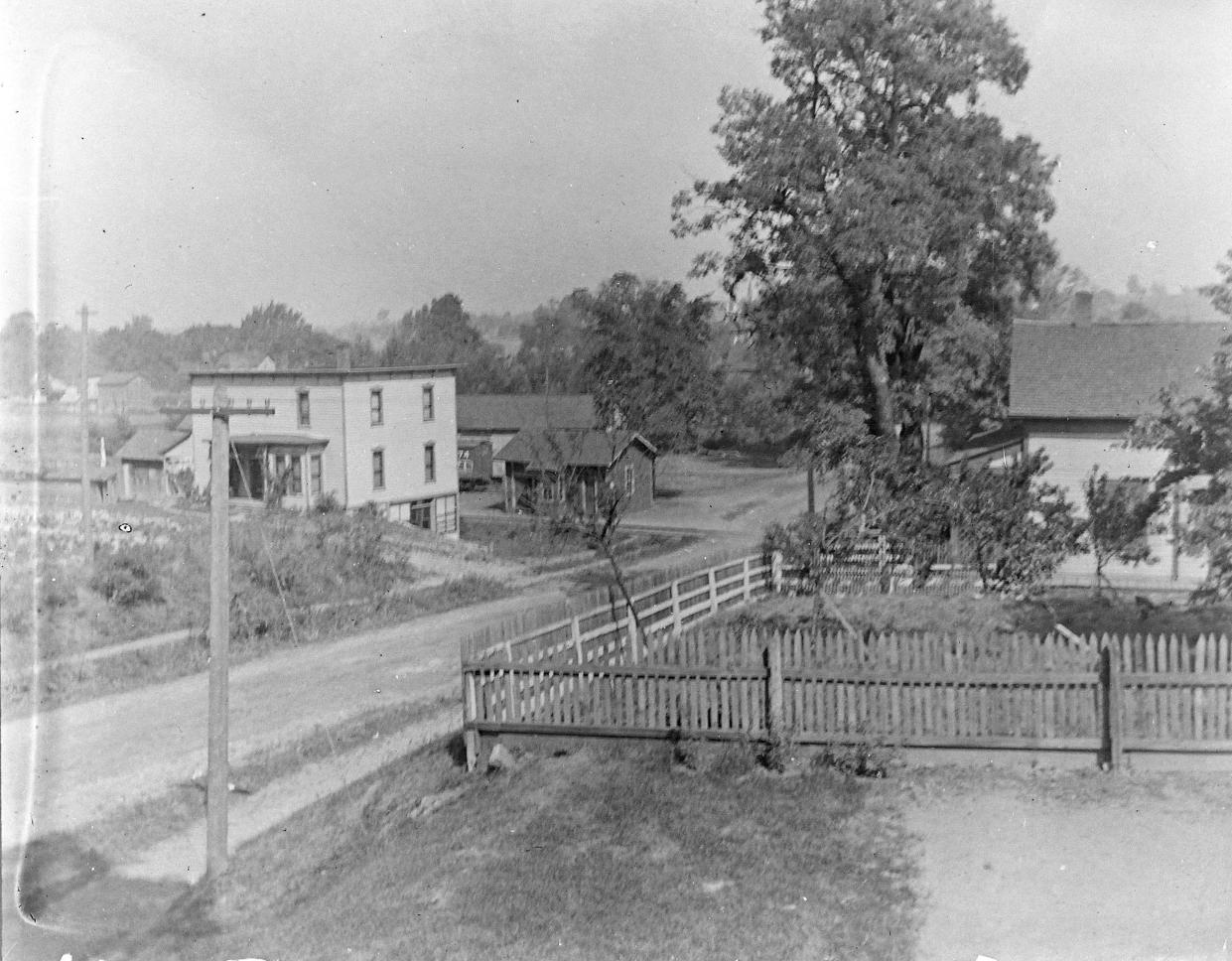
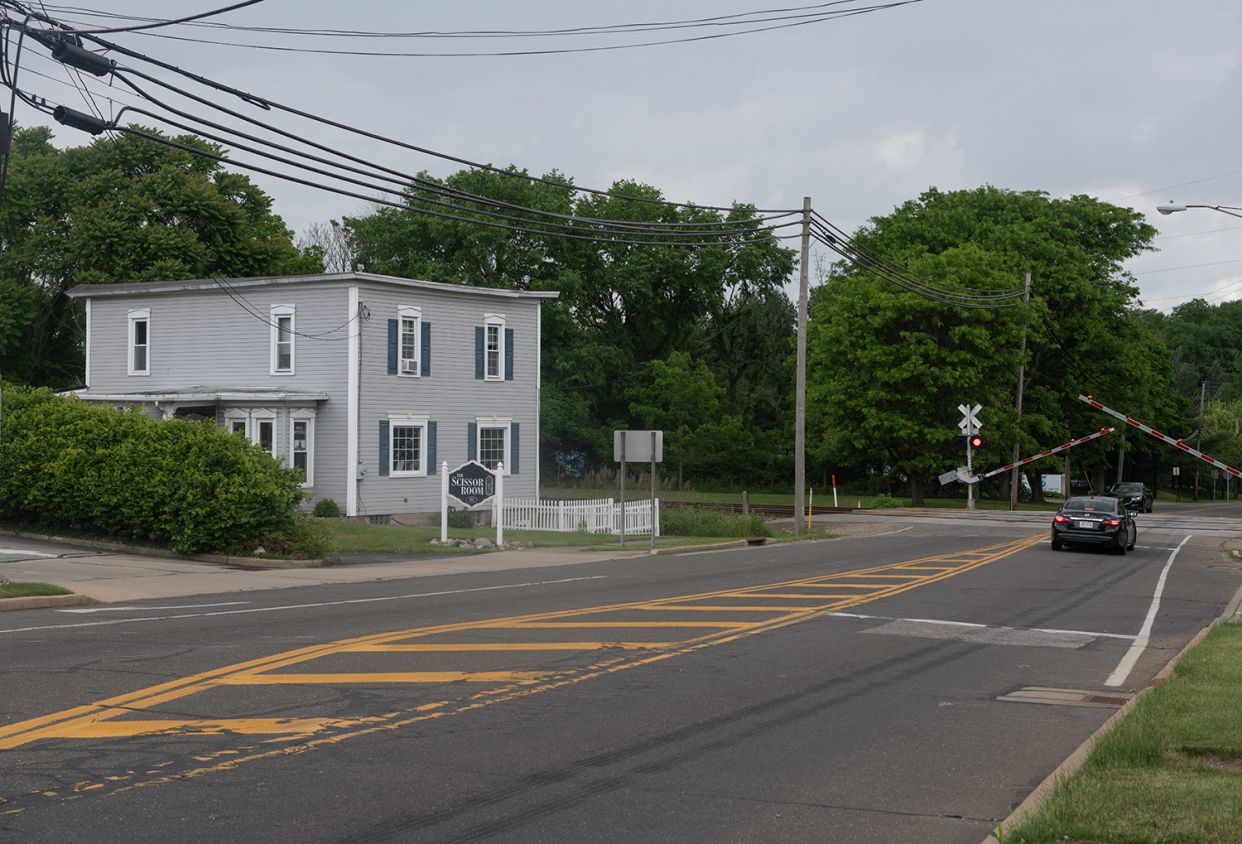
Main Street in Munroe Falls
Remember the hill in the J.J. Uplinger store photo? Now imagine standing at the top of the steps and looking north.
That’s an early 20th century view of Main Street in Munroe Falls. Today, the rural road is bustling Route 91.
If you look closely, you can see the Baltimore & Ohio depot along the railroad tracks. The flat-roofed building at the top left is the Geistweite home, which was built in 1868 when the Pennsylvania & Ohio Canal was still in operation.
The historic home at 21 N. Main St. is now the Scissor Room, a beauty salon and spa.
Thanks to Tom Arbour, Claudia Wright Grimes, Debra Lape and Bill Schloman for helping solve this one.
“This was a really great photo for me because I've seen plenty of shots of the depot but I had never been able to place the exact location, and this photo shows exactly which corner it was located on,” Arbour noted.
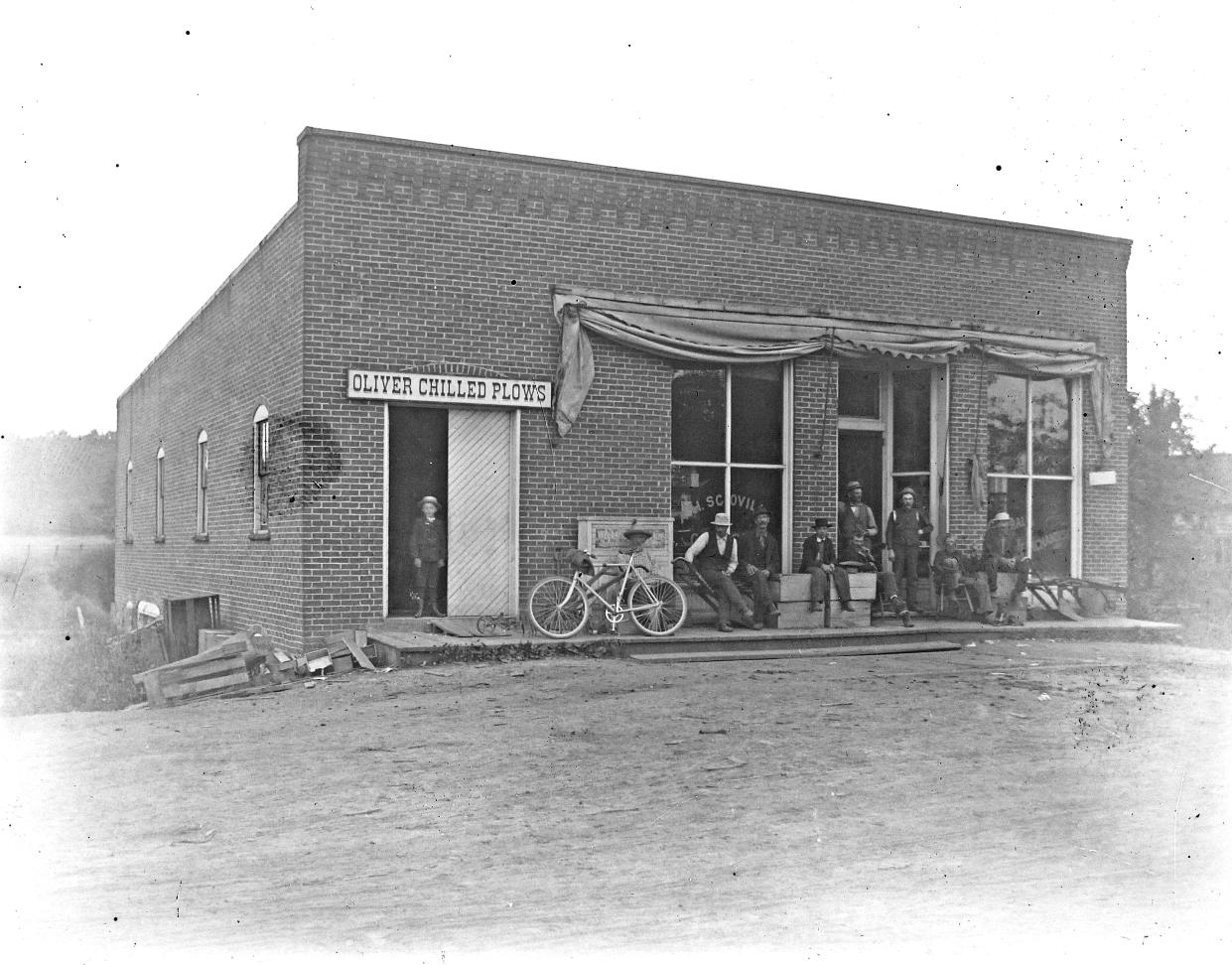
The A.H. Scovill store
J.J. Uplinger had family in Portage County’s Freedom Township. One of them was Arthur Higby Scovill (1858-1924), a merchant and postmaster in Freedom Station northeast of Ravenna.
Uplinger’s wife, Elizabeth, and Arthur’s wife, Emma, were sisters, the daughters of Nelson and Catharine Webb.
Scovill’s brick store, identifiable by its sign for Oliver Chilled Plows, was across the street from the Erie Lackawanna depot in the hamlet of Freedom Station. After Scovill retired, Oscar F. Hunt operated the store into the late 1940s.
By then, the Ravenna Arsenal had swallowed up 900 acres. The depot was torn down in the 1950s, but the old store still stands.
“It’s now part of a house,” said Judy Thornton, president of the Freedom Township Historical Society.
The original structure is hidden behind home additions. We’re not divulging the location because it’s private property. A sign says “NO TRESPASSING.”
Thanks to Randy Bergdorf, Michael Elliott, Phillip McCoy, Karen Molnar, Dr. Shirley Wajda and Diane T. Wilson for helping solve this one.
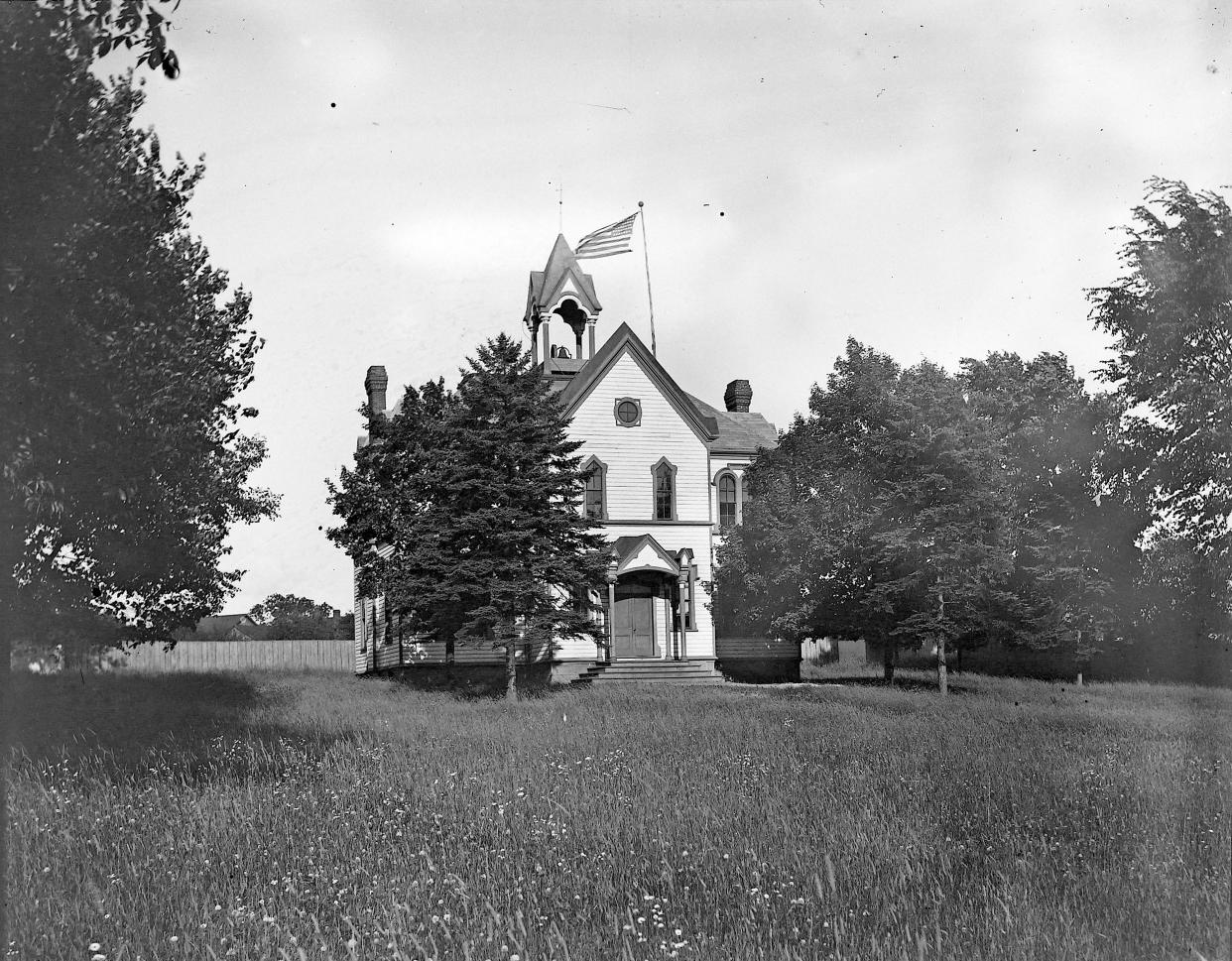
Tallmadge Center School
We asked: “Is it a church, a school or a town hall?” The correct answer is school.
Tallmadge Center School was built on North Avenue on the site of a three-room school that burned down in 1871. It initially taught pupils in first through eighth grades but later added three years of high school.
The high school’s first graduating class was 1879.
Tallmadge tore down the building in 1912 after constructing an adjacent school complex. The Village at Town Center occupies the site today north of Tallmadge Circle.
Bill Schloman pointed out the 47-star flag in our photograph, which narrows the date range of the image to the years 1896 to 1908.
Thanks to Michael Gearhart, Brian Matthew Jordan, Debra Lape, Michelle Persons, Erik Rinaldo and Susan Zake for helping solve this one.
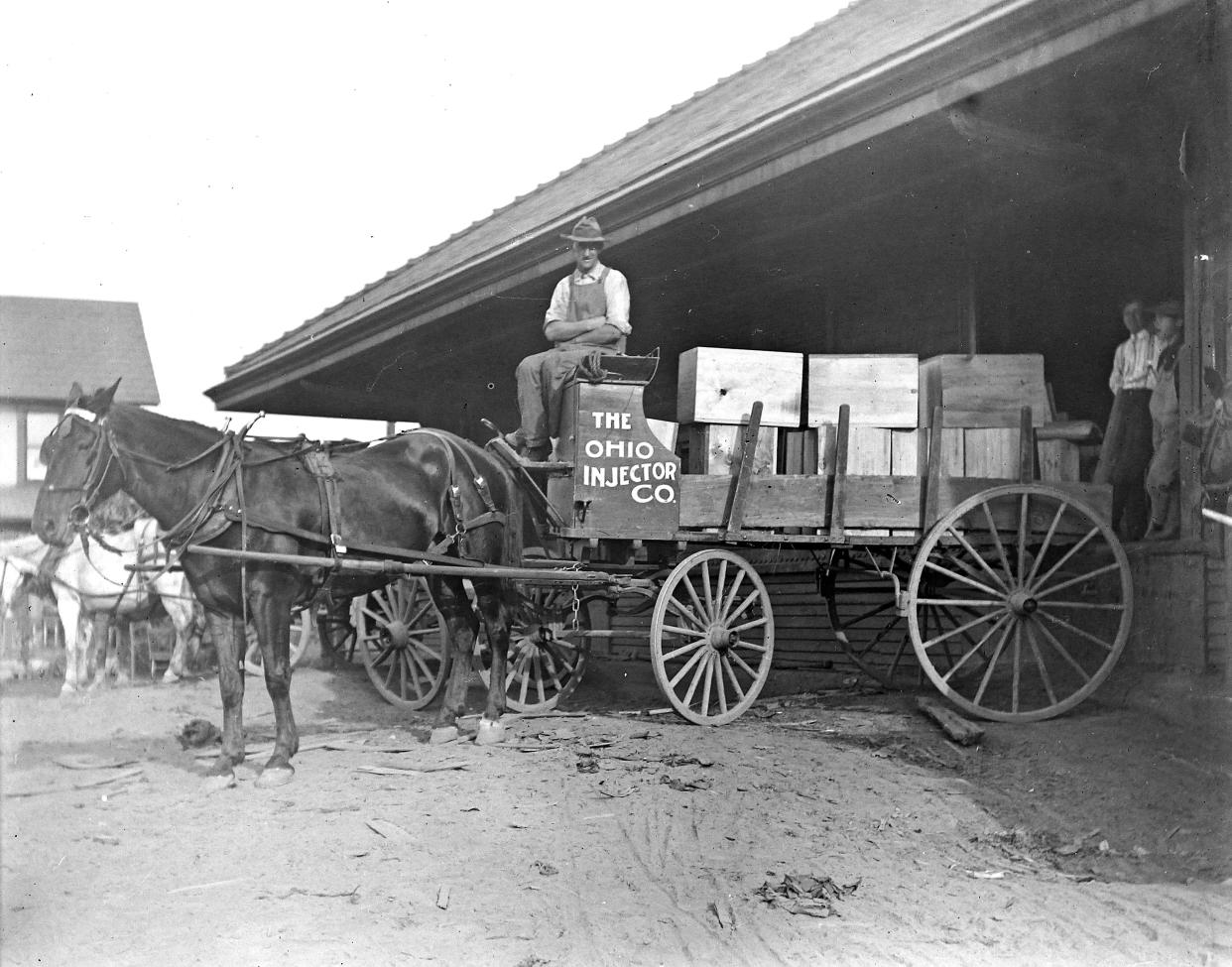
The Wadsworth Depot
We have a front view of the Erie depot in Wadsworth among the glass plate negatives. I didn’t realize there was also a back view.
The photo of the Ohio Injector Co. worker unloading crates from a horse-drawn wagon appears to have been taken at a loading dock behind the train station, Erik Rinaldo noted.
The ridge and slope of the roofing seem to match the front view. The depot, which was built in 1897, stood at 383 Main St. for 85 years. Conrail tore down the vandal-plagued structure in 1982. Today the site is a vacant lot.
The Ohio Injector Co., a Wadsworth landmark for a century, closed in 1983.
Thanks to Bob Hasenyager and Susan McKiernan for helping solve this one.
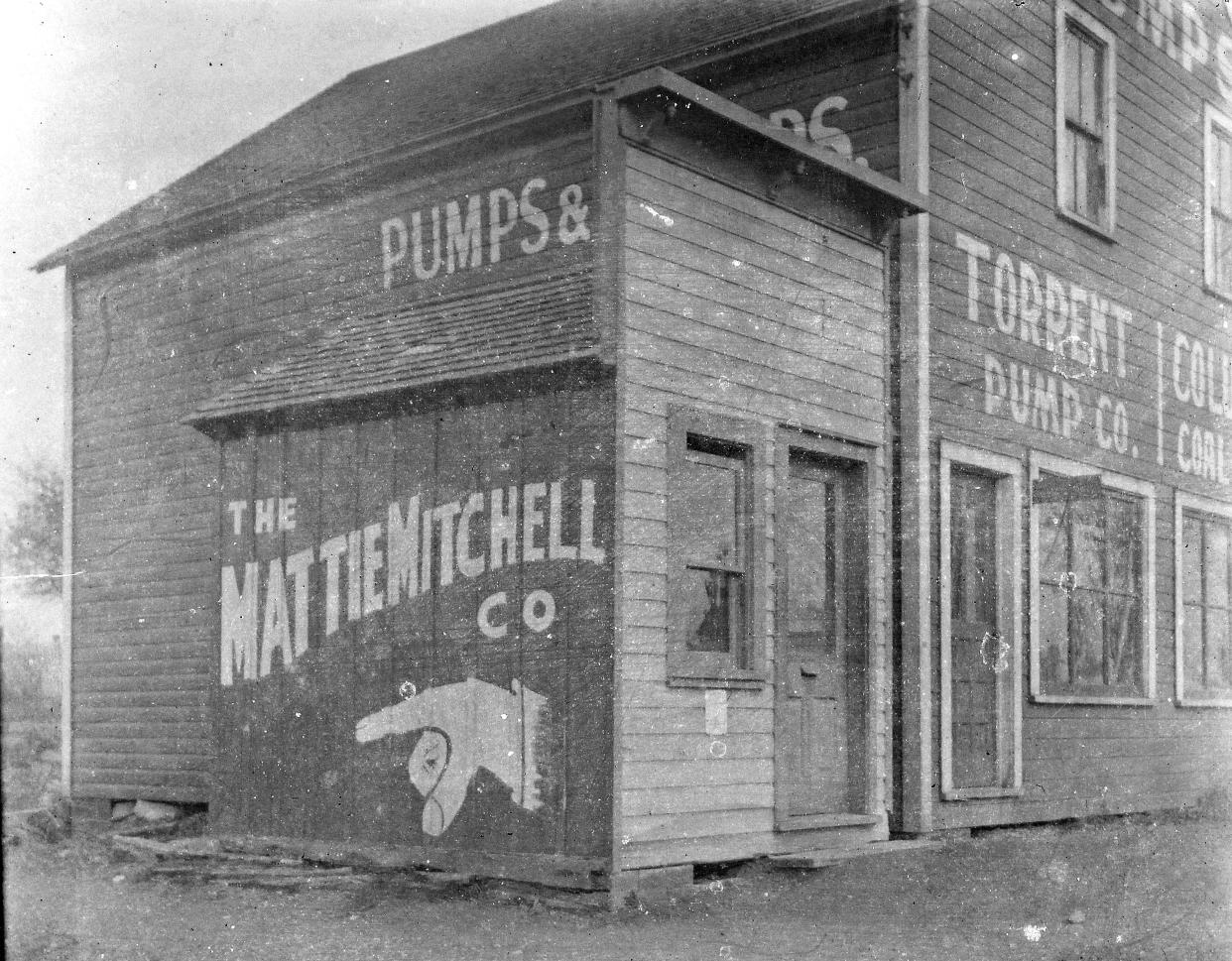
Cleveland companies
Ohio author Debra Lape analyzed the photograph of the wooden building painted with corporate logos. She believes the corner structure served as a billboard of sorts for nearby Cleveland businesses.
Using vintage maps, city directories, patent documents, newspaper articles and satellite images, she tracked the site to Harvard Avenue in Cleveland.
The Mattie Mitchell Co., which made self-rising flour, baking soda and other products, operated on Harvard Avenue from the late 1880s to early 1920s. The Torrent Pump and Fence Co. (what a combination) had a factory on the street. Collins & Co., a coal business, also was there.
All three seem to be advertised on the building that is pictured. It’s the only verified Cuyahoga County image in the collection.
“Your singular photo captures the manufacturing history of Cleveland in one square block,” Lape wrote.
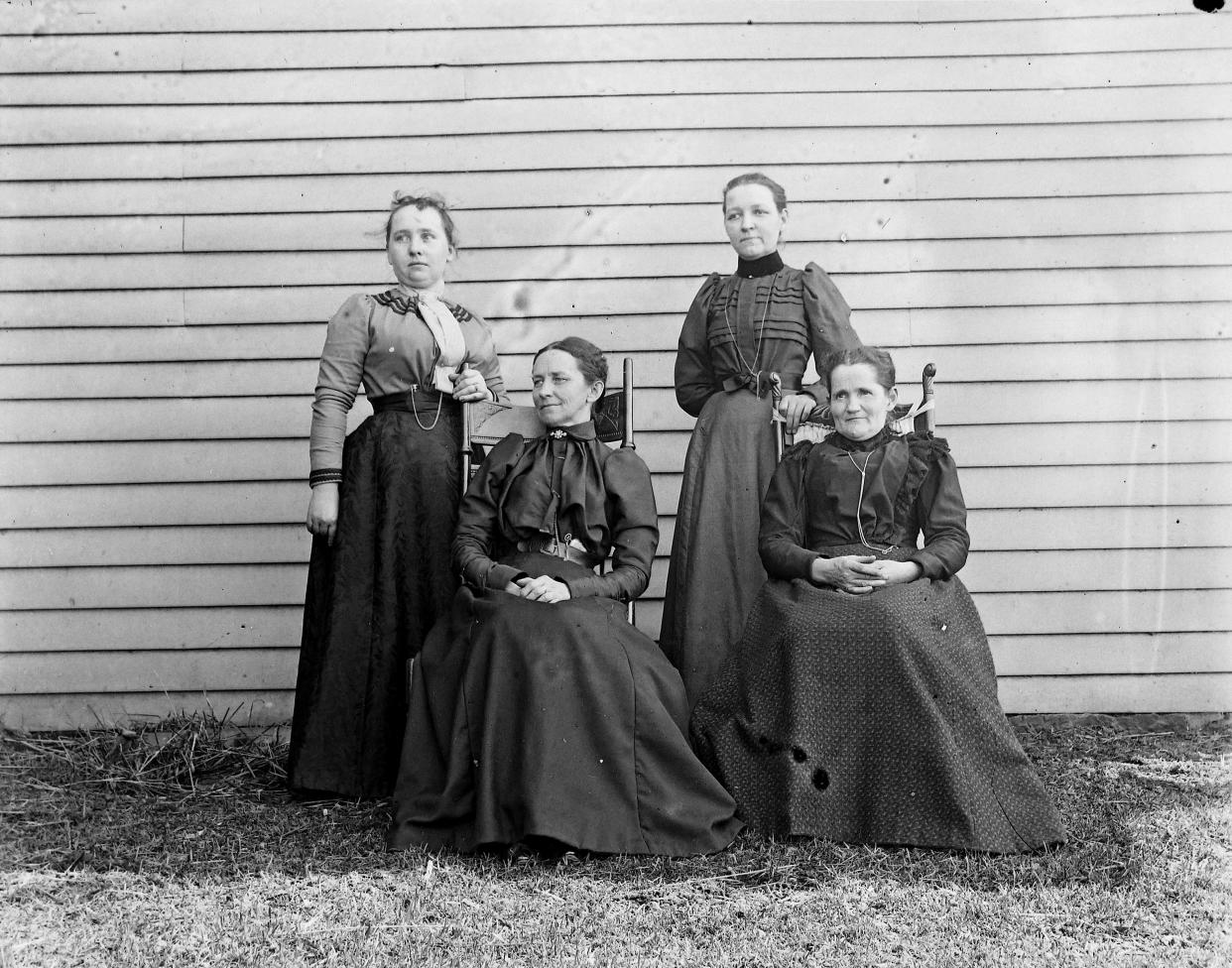
Group portraits
I doubted that we’d be able to identify any of the faces in the group photos, but I was wrong.
The Munroe Falls Historical Society owns an identical image of the four women in long dresses. Two are seated and two are standing on a grassy area next to a clapboard building.
According to the historical society, these were members of the Munroe Falls Mush Club, a group devoted to wild mushroom foraging and mushroom farming classes. The standing women are identified as Mrs. Sam Harris and Mrs. J.J. Uplinger and the seated women are Mrs. McCracken and Mrs. Stromare (no other names are given).
It must have been tough to forage in those high collars and long dresses.
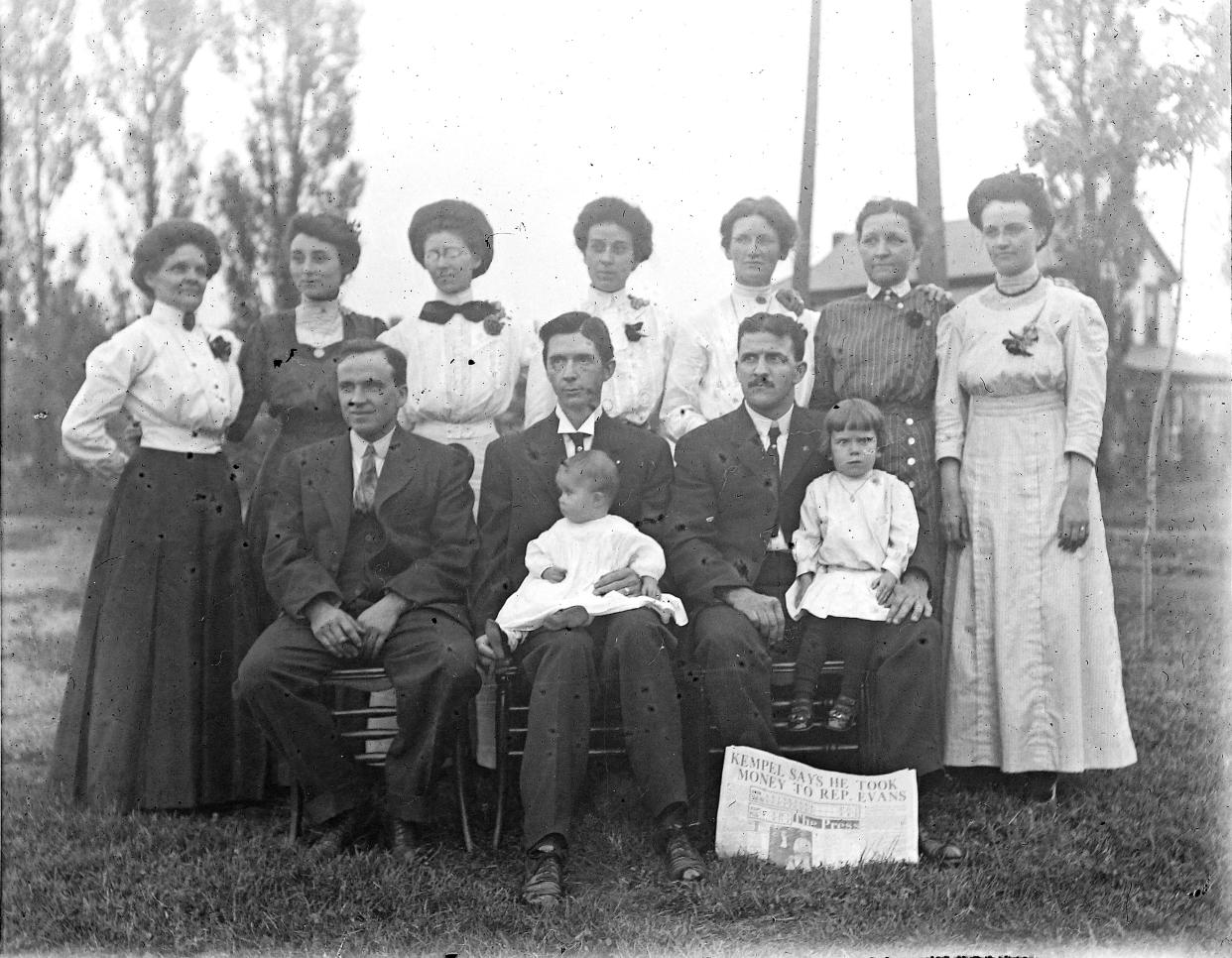
We still don’t know the names of people in another portrait, but we have a better idea when the photo was taken.
A Cleveland Press newspaper placed next to the group bears the headline “KEMPEL SAYS HE TOOK MONEY TO. REP. EVANS.” It’s an article from June 1911 about Charles W. Kempel, chief clerk of the Ohio House, acting “unknowingly as a go-between” in the payment of $100 to Rep. Owen Evans for his vote on a liquor bill.
Thanks to Danny Jenkins, Debra Lape and Dr. Shirley Wajda for pointing this out.
Who took the photos?
Several images have yet to be identified in the glass plate negative collection. Check out the gallery with this story online.
Akron librarian Michael Elliott theorized that the unidentified photographer may have worked for Western Union, possibly as a repairman. General stores and railroad depots used telegraph service in the early 20th century.
Red Hageman’s father, Charles Philo Hageman (1882-1925), and uncle Otto Webb Uplinger (1881-1950) both listed their occupations as telegraph operators, and Uplinger retired from Western Union after 37 years.
Elliott might be close to solving the mystery. Who was the photographer? It could be as easy as a 50-50 guess: Charles or Otto.
Mark J. Price can be reached at mprice@thebeaconjournal.com
This article originally appeared on Akron Beacon Journal: Readers identify Ohio photos from early 20th century
